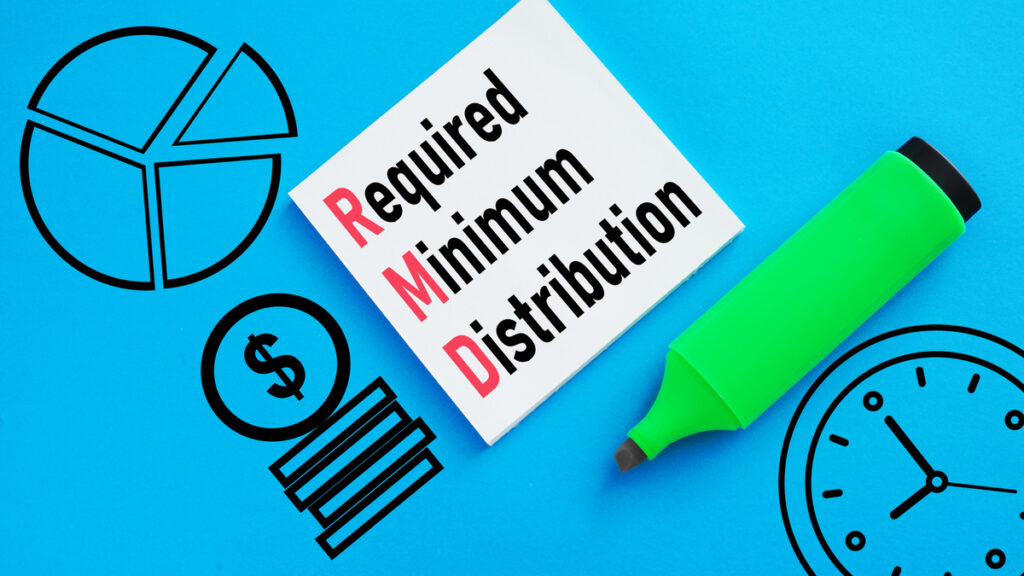[ad_1]
Knowing the rules can help you avoid significant penalties.
The biggest advantage of saving for retirement in a 401(k) or traditional IRA is the tax break: Taxes on the funds you contribute to those accounts are deferred until you withdraw them in retirement. That can give you more money to invest today.
But you can’t defer those taxes forever. Eventually, the government will require you to start making withdrawals from your retirement accounts. When you turn 73, you’ll be faced with required minimum distributions, or RMDs. People who inherit IRAs will often also have RMDs.
If you fail to take at least your mandated distribution in a given year, you’ll face a hefty tax penalty. Failure to make an RMD on time can cost you up to 25% of the amount you were supposed to withdraw, and you’ll still have to make the withdrawal and pay the taxes anyway.
Here are three common mistakes to avoid.

Image source: Getty Images.
1. Missing the deadline
It might sound simple — you need to take each year’s required distribution before the deadline — but these things have a way of becoming more complex than you might realize.
Your first RMD doesn’t have to take place until April 1 of the year after you turn 73. That will give you a few extra months to figure out how to set up your distributions. Keep in mind, though, that the deadline for taking your second RMD will still be Dec. 31 in the year you turn 74. That could mean you’ end up taking two distributions in the same year, leading to a bigger tax bill.
If you have to manually request a distribution from your brokerage provider at the end of the year, don’t wait until the last minute. Financial institutions get inundated with all sorts of requests at the end of the year, and delays in implementing them aren’t uncommon. Make sure you provide plenty of time for them to process your request and make your distribution. If your brokerage doesn’t process your withdrawal on time, it’s still your responsibility.
If you do end up missing the deadline, but you take the correct distribution within two years of the deadline, the 25% penalty is reduced to 10%.
2. Miscalculating how much you need to withdraw
Most brokerages will automatically calculate your required minimum distributions for you each year. But if you own multiple accounts subject to RMDs, you may want to manually adjust things, so you only have to withdraw from one or two accounts. That’s where human error can come into play.
Make sure you’ve accounted for all of your separate IRAs, 401(k)s, and various other types of retirement accounts. Make sure you’re using the correct balance for each of them when performing your calculations — the balance at the end of the previous year. Also, be sure you’re using the correct life expectancy factor — that changes each year as you age.
Another potential mishap is attempting to combine RMDs across different types of accounts. If you have money in an IRA and a 401(k), you’ll need to withdraw funds from each of those account types separately. You can’t take a distribution from an IRA and expect it to count toward your 401(k) RMD. If you have multiple 401(k) accounts, you’ll need to take an RMD from each of them, but you may combine the RMDs of your personal (non-inherited) IRAs and take a withdrawal from just one of them.
3. Overlooking RMDs on inherited IRAs
If you inherited an IRA after Dec. 31, 2019, from someone who was already taking required minimum distributions, you’ll have to continue taking annual RMDs until you empty the account. The IRS waived that requirement each year from 2020 through 2024, but it will start enforcing it again in 2025. There are a few exceptions to the rule for qualifying beneficiaries such as spouses, minor children, and beneficiaries who are less than 10 years younger than the account’s original owner.
People who inherit an IRA have just 10 years to withdraw all the funds from the account. As such, it will likely make sense to space those distributions relatively evenly in order to reduce your overall tax burden. Still, you may opt to take your RMDs in years one through nine, and then take one big distribution of the remaining funds in the tenth year.
People who inherited IRAs on or before Dec. 31, 2019, don’t qualify for that waiver. While the IRS waived the RMD requirement in 2020 thanks to the CARES Act, RMDs resumed for those inherited IRAs in 2021. The only exception is for beneficiaries who decide to distribute the entirety of an IRA inherited from someone before they started taking RMDs within five years. If you still own an inherited IRA from 2019 or earlier, you’ll likely need to take an RMD by the end of 2024 (and ensure you took RMDs in each of the last three years).
Knowing the rules can help you avoid costly mistakes. At the very least, it gives you an idea of what you need to ask in order to make sure you don’t face a big tax penalty at some point in the future. If you’re uncertain or you have a complex situation, it may be worth the time and money to consult an expert.
[ad_2]
Source link

